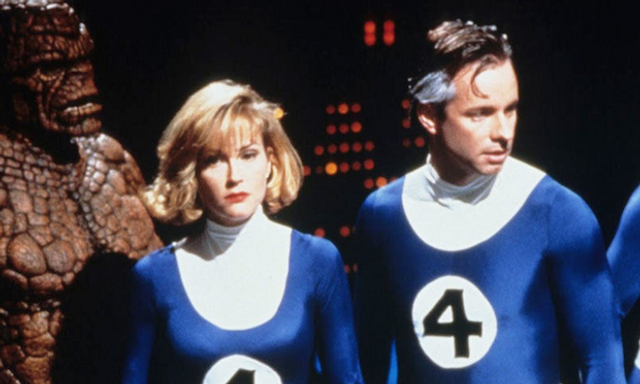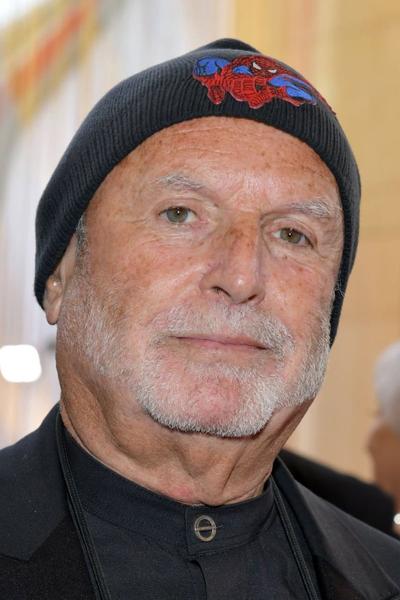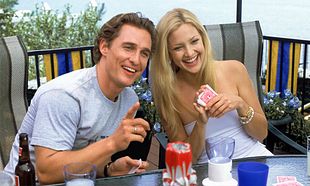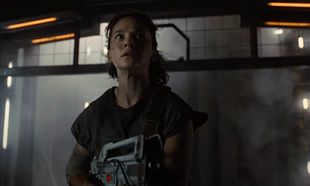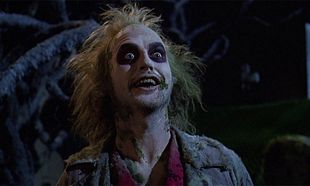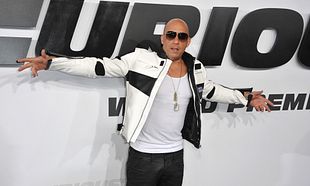As Fantastic Four continues its critical pounding, it's worth remembering that there's been several attempts at it.
Although most people point to the Jessica Alba / Chris Evans / Michael Chiklis version in 2005, there was a version almost ten years before that. It was made on a budget of $1,000,000 - 120 times less than the budget of the current version - and it never saw the light of day.
Back in 1986, German film producer Bernd Eichinger met with Stan Lee, the father of Marvel and creator of such legendary characters like Spider-Man, X-Men, Fantastic Four, Avengers and countless more. For Eichinger, it was more than just a meeting - it was an audience with a hero of his. "When I shook (Lee's) hand, I was kind of wobbling. It was like meeting God," Eichinger explained in an interview. The German had been a fan of Marvel's creations since he was a child and had longed to turn his early memories into living films. It wasn't just a fantasy for him, however.
Eichinger had been buying options for various properties with the plan of turning them into major movies. A discussion with Lee and Marvel proved fruitful, with Eichinger winning the rights to Fantastic Four for a price that's been speculated in and around $250,000. Eichinger's company, Constantin Films, was a shrewd investor and had bought the rights and turned The NeverEnding Story into a hugely successful franchise. For Marvel, however, it was merely a way to make a quick buck. In the mid '80s, comic-book titles were seen as cheap and schlocky movies, thanks in part to the Cannon Group's desperate sequel to Superman and various other critical and commercial duds.
Eichinger's thinking was that he could do the same with NeverEnding Story as he did with Fantastic Four. The plucky German took the property and shopped it across Hollywood. He booked meetings with every studio that was willing to bite. Warner Bros., who had scored huge success in 1989 with Tim Burton's Batman, looked like the likely choice. However, the use of expensive CGI combined with the production of Batman Returns meant that Warner Bros. simply wasn't interested. Columbia Pictures was the next stop. The studio had been searching for a comic-book property to kick off into a franchise. Rumours abounded that they were already in talks to take on Spider-Man. Eichinger's thinking was simple - sell them Fantastic Four first.
Again, no dice. The property went on and on to other studios, all said the same - it cost too much to make, it didn't have any potential as a star vehicle and there was no built-in audience who could readily identify with it. By 1990, Eichinger was in trouble. The deal he'd made with Stan Lee had a time-limit. He had until December 31st, 1992 to get a film made or else the property would revert back to Marvel's control and they could, technically, sell the rights again. Eichinger knew had to keep the rights if he wanted to see his version made. As he reasoned, they didn't necessarily need a blockbuster budget film. They just needed a film.
That's where the infamous Roger Corman entered the fray. Corman was known for his penny-pinching ways when it came to making movies. Eichinger was desperate to keep Fantastic Four for himself so he turned to Corman to help get a film made. Together, Eichinger and Corman began putting the film together, firstly by hiring a director. Oley Sassone, a music-video director who was also the son of haircare mogul Vidal Sassoon, was brought on and told to get to work. They began hiring little-known actors at a rate of $3,500 a week in order to get the production started before the deadline. In the space of 21 days with twelve hours of shooting, the entire film was shot and cut during the night with Sassone borrowing cameras and editing through the night to get it done in time. The actors, sadly, didn't get the memo about the film not being released. Many believed that it would be a way of starting off their careers. After all, legends such as James Cameron, Jack Nicholson and Robert DeNiro had all begun life in Roger Corman's employ. Surely the same could happen for them, right?
Throughout the production, there were rumours on-set that the film was never intended for release. Eventually, Eichinger openly admitted it to Sassone - the film would never see a release. All their work was for nought. The film was only intended a placeholder, something that would keep the option in his control and allow him more time to make another. The cast, sadly, weren't told of this until the very end.
Despite this, however, there are conflicting versions of what happened. The most well-known version of events state that Eichinger churned out the film with Corman in order to keep control of Fantastic Four, enabling him to eventually sell it on to another studio. Eichinger would eventually go on to produce the 2005 version and Constantin Films are producers on the current version. Another version of events - corroborated by Eichinger himself - has it that Eichinger was approached by then-Marvel's film honcho, Avi Arad, and offered a refund of the money spent to make the film. Arad's thinking was that if the film were to see the light of day, it would ruin any chance of future Fantastic Four movies because people would associate the cheesy, Roger Corman-produced, B-movie elements with a higher-budget one. As Arad describes it, he bought the film and burn it so nobody would ever see it. He himself didn't even watch it. The film now has the dubious honour of being the first and only ashcan movie; a term that has its genus in old comics that were made purely for record-keeping purposes.
It seems that Eichinger was, throughout the production of the cheaper, unreleased version, looking ahead to a big-budget version. When Avi Arad stepped in around 1994, so did the money. $40,000,000 was put to make a new version. Eichinger had signed Chris Columbus attached to direct; who eventually left. Ant-Man's Peyton Reed was in contention to direct at one point. The film went through several permutations for over ten years before it eventually made its way to the screen in 2005. By then, most had forgotten about the unreleased version and the story passed into legend. It was the first time a tactic such as this had been employed to keep a film property in play and one that's unlikely to be repeated again. The film has never been officially released on DVD or screened on television, primarily because the film exists in a copyright limbo. There are versions of the film available on YouTube and the film enjoys a cult status amongst aficionados, yet sadly, it will never see the light of day beyond this.
